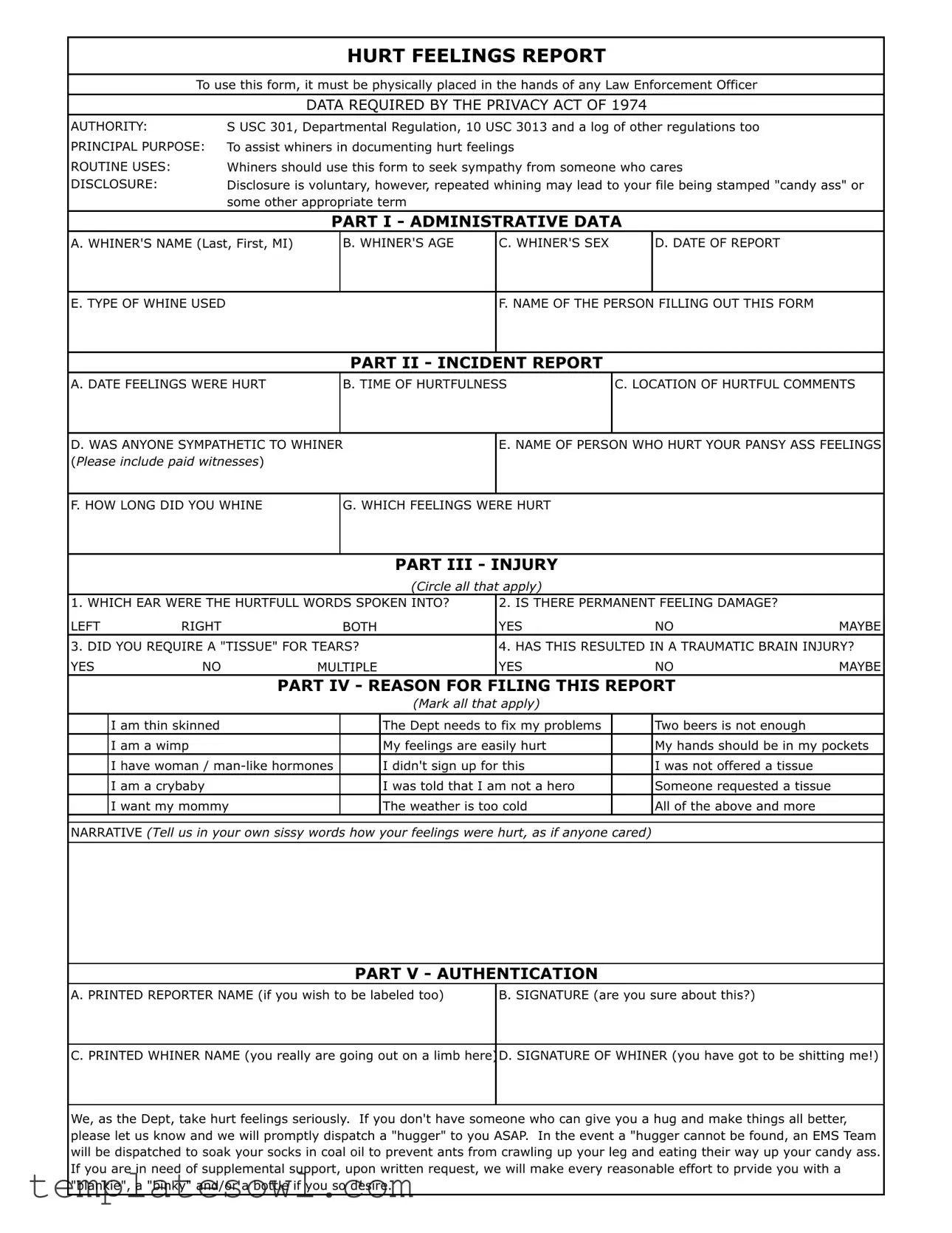Filling out the Hurt Feelings Report form can be challenging, and people often make mistakes that can hinder their ability to have their concerns addressed. One common error occurs in Part I, where individuals neglect to fill in their full name. Omitting either the last name or the first name can cause confusion and delay in processing the report. Additionally, skipping the middle initial can lead to misidentification. Ensure that all personal details are entered accurately to avoid complications.
Another frequent mistake is failing to provide enough details in Part II, the Incident Report section. The report requires specific information about when and where feelings were hurt. Empty answers can result in a lack of understanding regarding the situation. For instance, not mentioning the exact date or time can make it difficult for investigators to follow up. The location should also be clearly described, as vague answers may lead to unnecessary questions down the road.
In Part III, many people misuse the options related to injury assessment. Some individuals might leave the 'How long did you whine?' question blank or provide an unclear timeframe. The form seeks clarity, and offering a specific duration can help paint a clearer picture of the emotional impact. Furthermore, inaccurate responses regarding whether a tissue was required can reflect poorly on the report’s credibility.
While filling out Part IV, it’s not uncommon for individuals to mark too many reasons for filing the report. Selecting "All of the above" without careful consideration may overshadow specific grievances, making it harder to address individual concerns. Tailor your selections to reflect the primary reason, as this can help prioritize the response.
Another mistake involves the narrative section, where individuals often fail to fully articulate how their feelings were hurt. Providing a vague or overly brief explanation may lead to further inquiries. Take the time to explain the situation clearly and descriptively. This detailed narrative is crucial for understanding the context of the hurt feelings.
Finally, many forget to sign their reports, as indicated in Part V. A signature is required to validate the report, confirming that the information is accurate and sincere. Failing to sign can result in the report being considered incomplete, which can prolong the process of receiving support. Always double-check that all necessary sections are filled out and that all required signatures are present before submitting the form.

